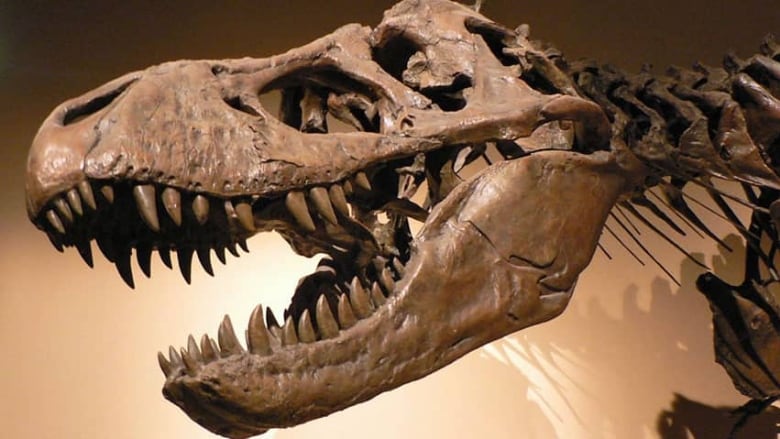'I really want to touch it': U of A experts discover dinosaur skin fossils
'It's not like the skin of snakes or lizards where the scales overlap,' says paleontologist Scott Persons

Members of an international research team, including paleontologists from the University of Alberta, know what it's like to touch a Tyrannosaurus rex.
Scott Persons, a paleontology fellow at the University of Alberta, and a team of international researchers have discovered the first record of skin samples from Tyrannosaurus rex, Albertosaurusand other tyrannosaurids dating back at least 60 million years.
"My first instinct when I saw the specimens was 'Oh my gosh, I really want to touch it,' " Persons said Tuesday.
"It was the fulfilment of my childhood dream."

The Albertosaurus skin fossil was found in the province. While it's not the T. rex itself, Persons said the texture of the skin is the same for both species.
'Feels more like tiles'
"The skin is actually pretty bumpy," he said. "It's not like the skin of snakes or lizards where the scales overlap. Itfeels more like tiles."
The researchers' paper will be published in Royal Society journal Biology Letters this month.
Thefindingsmay change the way biologists think about the evolution of the tyrannosaurid family, including T. rex.
According to past research,the first dinosaurs were covered in scales, but later evolved to have hair-like feathers over the scales.
The new discoveryindicates a different evolutionary tale.
"This is a very strange finding," Persons said. "[These findings] make for a more complex evolutionary story because the group developed feathers, and then reduced them."

Persons believes T. rex lost its feathers as it evolved and grew larger, needing less insulation from the tropical Alberta sun.
Other animals have reduced their skin coverings over time.
The elephant, hippopotamus and rhinoceros are "almost hairless now," Parsons said. He said they lost their hair as they evolved and grew larger, as a way to reduce body heat.
'Absolutely fascinating'
Team Rex member Phil Bell, an earth sciences professor at the University of New England, believes paleontology hasn't paid enough attention to dinosaur skin in the past.
"Dinosaur skin is absolutely fascinating," Bellsaid. "It gives us a real idea of what these animals actually looked like."
A University of Edinburgh study released in 2014 suggested that all living birds are thought to be descended from the tyrannosaurid family because of their capacity to stand on two legs.
The actual fossils are only for the hands of the paleontologists, but Persons hopes museums will be able to make rubber or cast models of the skin so children everywhere can realize their dreams of touching a T. rex.
"It has the potential to be that wow factor and to bring people to museums," he said.












_(720p).jpg)


 OFFICIAL HD MUSIC VIDEO.jpg)
.jpg)



























































































